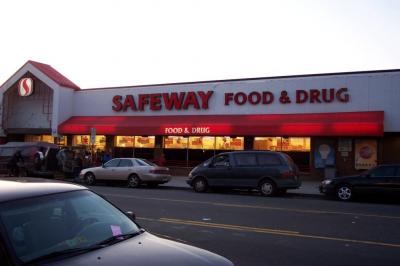Safeway, joining a whole string of California retailers, today announced a new environmental project to power 23 California stores with renewable solar energy. The company installed solar panels atop a newly renovated Safeway Lifestyle store in Dublin, California and plans to extend the program to nearly two dozen stores as part of a broader renewable energy initiative.
Congressman Jerry McNerney joined Safeway officials on a tour of the Dublin store’s rooftop solar panel array. “I applaud Safeway for its commitment to sustainability and for being an environmental leader among California-based companies,†said Congressman McNerney. “Their Dublin solar project stands as a model for other companies to invest in the same renewable energy technology in California and elsewhere.â€
The System at the Dublin Sore will produce 7,500 megawatt hours of electricity per year, enough to provide 20 percent of the stores’ average power usage and up to 48 percent of power usage during the peak hours. The entire Dublin Safeway facility utilizes renewable energy. The store’s on-site retail fuel station already is powered by wind energy. Thats right they have a wind powered gas station. The mind boggles. I would be a bit more impressed with a wind powered electric car charging station, but you know a boy can dream.
By using solar energy at the Dublin store, Safeway is removing 487,000 pounds of carbon dioxide from the air, the equivalent of taking 50 passenger cars off the road annually or planting 184 acres of pine trees. The entire 23-store solar program will remove 10.4 million pounds of carbon dioxide from the air, the equivalent of taking 1,000 cars off the road annually or planting 4,000 acres of pine trees.
In 2005 the company transitioned all of its 295 U.S. fuel stations to 100 percent renewable wind energy. Safeway is the largest retail purchaser of green wind energy in California and one of the top 25 Fortune 500 companies purchasing green energy nationwide, according to the Environmental Protection Agency.
The 87,000 megawatt annual purchase of wind energy is enough to power its fuel stations, the Safeway headquarters campuses in Pleasanton and Walnut Creek, all of its San Francisco and Boulder, Colorado stores.
Solar and wind energy are just part of Safeway’s extensive company-wide environmental focus. The company has invested in a range of other retail-based energy saving strategies to further reduce its power demand and carbon emissions.
Safeway chose state-of-the-art refrigeration system technology that is reducing electricity demand at new stores, and has installed no-heat freezer case doors that reduce electric heating. Safeway’s Lifestyle stores use LED (Light Emitting Diodes) lights for its exterior lights and signage, requiring 90 percent less energy to operate than traditional neon lights and signs.
Beyond saving power the company recycles annually nearly 500,000 tons of plastic, corrugated cardboard, compostable materials, metal and wood. In 2006 Safeway joined the Chicago Climate Exchange, the world’s first and North America’s only voluntary, legally binding greenhouse gas emissions reduction registry and trading program. CCX membership commits Safeway to reduce its carbon footprint from the base year 2000 by 390,000 tons of carbon dioxide. The company also joined the California Climate Action Registry, California’s only official registry for greenhouse gas emissions reduction projects.
You might be wondering why all of these things seem to be happening in California, and not where you live. Well the simple reason for that is that the people and government of California have passed several laws and enacted several policies that make it economically pleasant (either through incentives or taxes/fees) for companies to do so. The system is working there and it could work where you live as well. Don’t be shy about letting your elected officials know that you would be interested in seeing new solar powered retailers going up where you live, and that they should enact laws that will encourage stores to do so.
